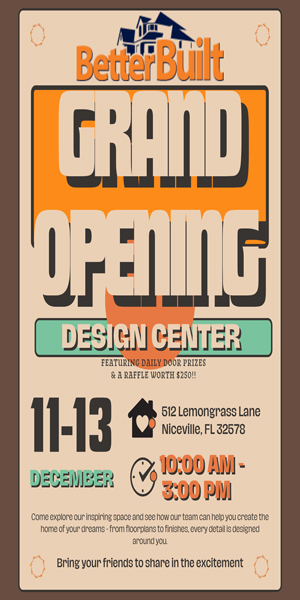NICEVILLE, Fla. — This week’s “It’s Geek to Me” column tackles a reader’s frustration with Microsoft Notepad not opening maximized in Windows 11.
QUESTION:
I have a question about running Notepad under Windows 11: What registry setting can I tweak to get Notepad to open maximized? Thanks. Life is short, and since I use Notepad myriad times daily, I’ve surrendered almost four Earth Days to “Bill” double-clicking Notepad’s header bar to maximize each time I launch it.
– William R.
Fort Walton Beach, Florida
ANSWER:
Thank you for writing, William. And, of course, “Thanks, Bill!”
As always, I have some suggestions that will ease your problem. Whether these completely solve it or not will depend first on how you actually launch Notepad (more on that below) and second on whether you insist on Notepad actually and technically being maximized, or whether running it full screen will be enough to satisfy you.
Let’s get started.
Notepad, like most Windows programs, can be launched in a variety of ways. There’s the classic Start Menu link, which in later versions of Windows has been extended to that link being pinned to the taskbar.
You can also launch most applications through their file association by double-clicking a file with the appropriate extension – in the case of Notepad, that would be .txt.
It’s important to know that Notepad does not support launching maximized using any of the above methods. There are no registry tweaks or command line options that will change that fact.
So, let’s explore some alternatives.
Many applications will remember their Window state (to include whether it was maximized) when the program is shut down, and will implement it again the next time it is launched.
Unfortunately, for whatever reason, Microsoft chose not to include the maximize state in what is remembered for Notepad.
However, it does seem to remember the Window size and position.
So, if you resize the Notepad window to fill the entire screen (use the resize handles, not the maximize button) then use the X in the corner to close it, the next time you run it, you should be greeted with a Notepad that fills your entire screen, even though technically it is not running maximized.
This will work regardless of the methods described above that you use to launch Notepad. However, you may find that if you launch multiple copies simultaneously, Notepad tends to cascade the windows, which can disrupt your carefully crafted screen positioning.
There is one method that you can use to launch Notepad in a truly maximized state, and that is with a specially configured shortcut.
In using this method, the shortcut is the only way you can launch it maximized. If you use any of the other methods described above, Notepad will launch, but not as a maximized Window.
To get started, you need to locate or create a shortcut that launches Notepad. You can do this by going to the Start menu and typing “Notepad” and then right-clicking the result.
From the context menu, select “Open file location,” and you will be whisked away to the super-secret location on your computer where Microsoft has chosen to hide Notepad.
If it’s already a shortcut, you’ll see an arrow overlay in the lower-left corner of the icon. If you don’t see that, right-click on Notepad and select “Create Shortcut.”
You’ll probably be told you can’t create it here, and it will offer to do it on the Desktop. Accept that, knowing you can always move it later if you want.
Unlike regular .exe icons, Shortcuts allow you to specify certain attributes about how the underlying program runs.
One of those attributes is what type of Window to run when the shortcut is activated, and that includes running maximized.
To enable this, right-click on the shortcut and select “Properties” from the context menu. Switch to the “Shortcut” tab and find “Run” near the bottom of the dialog.
Drop-down the control, and lo and behold! There’s “Maximized”! Select it, and click “OK.”
You will now find that when Notepad is activated through this Shortcut, it runs Maximized.
You can open individual .txt files in their maximized state by dragging them and dropping them on the Shortcut.
You can even make copies of this shortcut and place them in strategic places where they’re most convenient for you, such as the Task Bar, or in working folders.
For next week’s issue, it’s back to tutorials and other non-question content, because my question queue is bone dry.
You can help this situation by sending in your questions!
Remember, you don’t need to ask only about computers – I’ll answer questions you have about virtually any form of technology.
To view additional content, comment on articles, or submit a question, visit my website at ItsGeekToMe.co (not .com!)
Jeff Werner, a software engineer based in Niceville, Florida, has been writing his popular “It’s Geek to Me” tech column since 2007. He shares his expertise to help readers solve everyday tech challenges.







